[ad_1]
In mid-November 2021, an awesome storm begins brewing within the central Pacific Ocean north of Hawai‘i. Particularly heat water, heated by the solar, steams off the ocean floor and funnels into the sky.
This text is from Hakai Journal, a web based publication about science and society in coastal ecosystems.
A tendril of this floating moisture sweeps eastward throughout the ocean. It rides the winds for a day till it reaches the coasts of British Columbia and Washington State. There, the storm hits air turbulence, which pushes it into place—straight over British Columbia’s Fraser River valley.
Clouds collect and darken. Beneath, a patchwork of farms and subdivisions sprawls alongside the Fraser River from its mouth, south of Vancouver, to the eastward mountain slopes, and southeast throughout the US border. On the middle of the valley lies Abbotsford, a metropolis of round 150,000 individuals nestled in a fingerprint-like melancholy between two mountains. Because the stream of humid air rises towards the peaks, it cools, condenses, and bursts.
To Murray Ned, it feels like a creek is overflowing outdoors his house in Kilgard, on a hillside inside Abbotsford that’s a part of the Semá:th (Sumas) First Nation reserve. Mendacity in mattress, Ned listens to water overflow his rain gutters and splash two tales to the bottom. Rain is frequent in Abbotsford in November, but it surely’s often quiet. And it often lets up.
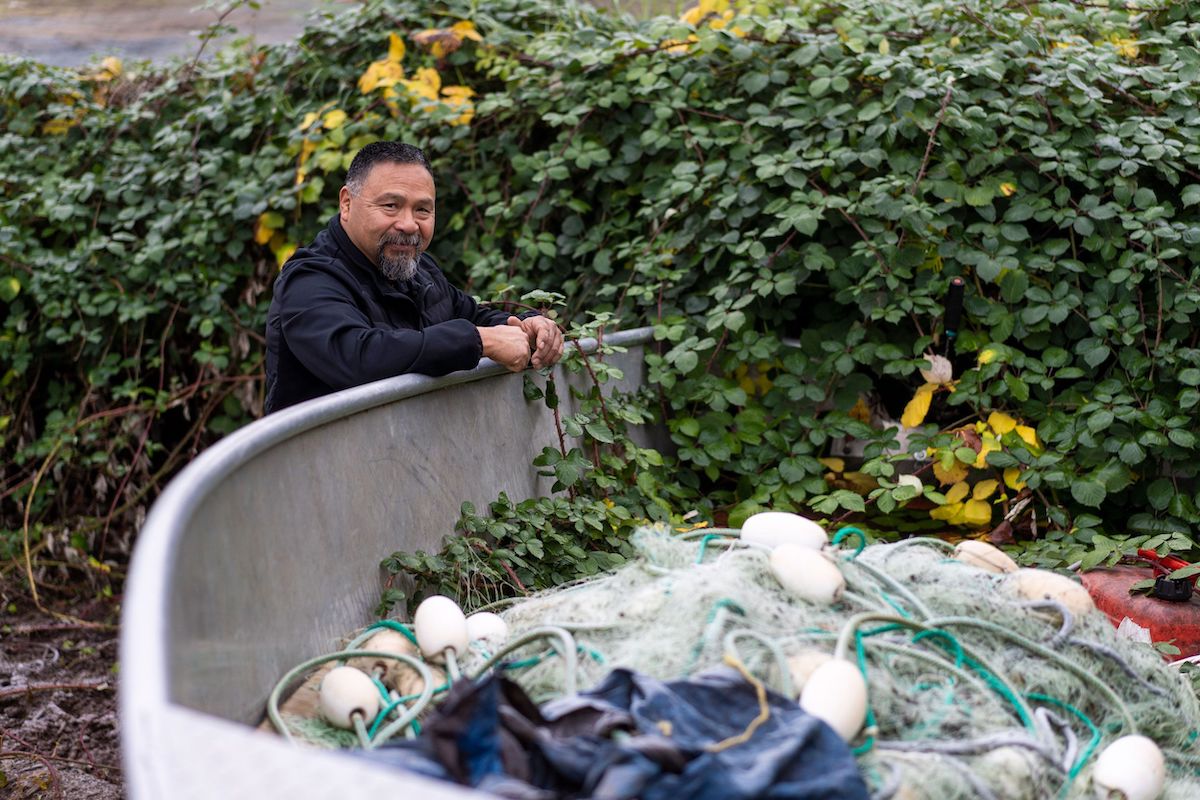
Over the following two days, almost a month’s value of rain dumps right here and in different components of the province. The ensuing floods and landslides kill no less than six individuals, rip aside buildings, and buckle roads. In Abbotsford, greater than 1,000 houses are swamped and 640,000 cattle perish as rivers reclaim agricultural land within the floodplain.
However amid the losses, Ned sees one thing else. The Tuesday night of the flood—after he has vacuumed water from his mom’s basement and moved the household’s horses to excessive floor—the deluge stops. Ned settles right into a folding chair in his yard, pulls out a Kokanee lager, and takes within the view. The flood laps knee-high in opposition to his horse barn. Semá:th Xó:tsa, Sumas Lake, has returned to the territory.
As soon as a 6,475-hectare physique of water, Sumas Lake brimmed with sturgeon, trout, and 5 species of salmon—sustaining the Semá:th individuals and bigger Stó:lō Nation for millennia. The lake swelled with fall rains and spring snowmelt, and shrank throughout summer time, leaving fertile floor between the excessive and low water marks the place wild potatoes, berries, and blue camas flowers with edible bulbs thrived. By 1924, although, settlers had transformed the lakebed into everlasting farmland with a system of dikes, canals, and pumps. However after the 2021 storm, the whole lot within the lowlands is submerged once more, from cornfields to the Trans-Canada Freeway to a castle-themed enjoyable park.
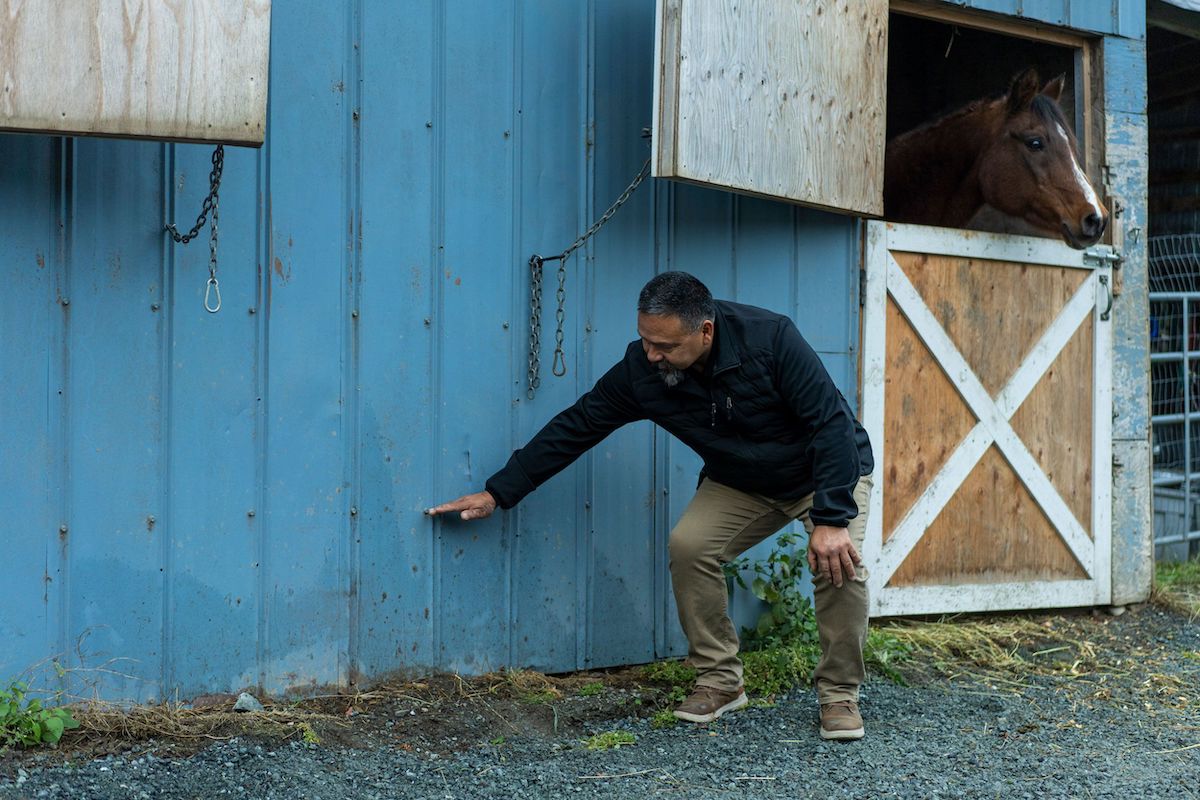
Many of the floodwaters have come from the Nooksack River. Excessive runoff shifted the Nooksack’s course from its typical east–west movement in the US and despatched it speeding northward into Canada. Stó:lō elders know it might probably do that. For a lot of the postglacial interval, earlier than pure sedimentation deflected its course, the Nooksack fed the Sumas and Fraser Rivers in addition to Sumas Lake. Massive floods at the moment can nonetheless ship the river again north, borders be damned. Water was made to vary states. Not so way back, Sumas Lake had been there to catch it.
As Ned surveys the moonlit water, glistening round horse barns, poultry sheds, and energy strains, sturgeon and coho salmon swim outdated migration routes beneath the floor. “To see Mom Nature threaten [the region] but additionally see the lake in all its glory once more was fairly superb,” Ned tells me later. Alongside the lake, he sees the opportunity of a special future: one which restores area and adaptability for water and that retains communities safer from the extremes of local weather change.
The storm that hit Abbotsford is called an atmospheric river. These methods are frequent alongside the west coast of North America and midlatitudes world wide. They account for one-third to one-half of the annual precipitation in some areas and signify a serious supply of recent water for a lot of international locations. However research recommend that atmospheric rivers have gotten extra risky and are delivering water in greater bursts. Paradoxically, current storms, together with the one in British Columbia, have occurred between a few of the hottest and driest summers on report. After they ship wanted rain, it’s an excessive amount of for parched soils and concrete channels to include. This pendulum swing between deluge and drought—what meteorologists have began calling “climate whiplash”—will solely develop extra pronounced because the planet warms.
Ned and different members of Semá:th First Nation have begun advocating to revive no less than a part of Sumas Lake for the ecosystem and Stó:lō tradition, and likewise for flood management and pure water storage that can make the area extra resilient in opposition to future disasters. Up to now, they haven’t gained a lot traction in Abbotsford, however efforts elsewhere recommend they’re onto one thing. Maybe nowhere offers extra examples than California, which has lengthy ridden the seesaw between harmful downpour and punishing drought. Whether or not by foresight or give up, communities there are giving up new floor for water and restoring some pure methods, to work with rain when it comes.
Generally when heavy rain arrives in California, it originated close to Hawai‘i. Heat seawater evaporates and fills the air with water vapor, which will get blown throughout the Pacific till it collides with coastal mountains and falls as rain or snow. By the Nineteen Nineties, meteorologists believed {that a} windy layer within the decrease ambiance referred to as the low-level jet possible carried this tropical moisture. However simply how a lot moisture, how heat, how windy, and the place precisely it flowed remained mysterious.
In 1998, the Nationwide Oceanic and Atmospheric Administration got down to reply these questions with a program referred to as CALJET that deployed sensor-studded planes to fly into West Coast storms. By releasing devices referred to as dropsondes, which appear like mail tubes hooked up to small parachutes, the analysis group measured wind velocity, temperature, and moisture content material at completely different altitudes. A younger scientist named Marty Ralph directed the crew from the flight deck.
Ralph—who based and now directs the Heart for Western Climate and Water Extremes at Scripps Establishment of Oceanography on the College of California San Diego—first received curious about storms as a child dwelling in Arizona. He’d marvel from his bed room window on the monsoon rains that made the desert bloom. Later, as a graduate scholar on the College of California, Los Angeles, Ralph mounted a rain gauge outdoors his bungalow throughout one of many state’s worst droughts on report. He was shocked to seek out 100 millimeters of water within the gauge one winter night time; it ended up being half of the native rainfall for all the yr. “I received an early dose of how essential particular person storms may be in California,” Ralph says.

On his CALJET flights, Ralph received to know these storms extra intimately, from their bumpy interiors and thick foggy cloaks to their distinct aroma that wafted by the aircraft’s air filters. “It smelled tropical,” Ralph recollects, “simply sticky and heat.” The scent was coming from distant. The truth is, satellite tv for pc pictures later revealed that the bands of water vapor stretched a few thousand kilometers from the tropics to the coast, and so they had been as large as the space between Vancouver, British Columbia, and Portland, Oregon. However essentially the most spectacular half was the moisture, or “juice,” that the dropsondes measured: “The equal of 25 Mississippi Rivers of water, however as vapor as a substitute of liquid,” Ralph says.
As soon as the group crunched the numbers, they discovered that their findings lined up with a couple of landmark research of the day. One, by researchers Yong Zhu and Reginald Newell, helped coin an evocative time period—atmospheric river. “That’s when the sunshine bulb went on,” Ralph says. “We had been finding out a river within the sky.”
Within the quarter-century for the reason that storms received their identify, researchers have discovered that on common a half-dozen of those methods are transferring moisture across the planet at any given time. Native monikers level to their origins: the Rum Runner sends juice from the Caribbean to western Europe; the Pineapple Categorical is the well-known rainmaker that whisks moist air from Hawai‘i to the West Coast. There, atmospheric rivers act like a touring sprinkler system, spraying up at Alaska in late summer time and swiveling right down to California by winter or spring.
These sprinklers are often useful, however as in British Columbia, they’ll grow to be hazardous cascades. Throughout California’s Nice Flood over the winter of 1861–1862, a collection of atmospheric rivers made it rain for 43 days. The floodwaters fashioned an inland sea that stretched from the under-construction capitol constructing in Sacramento to the underside of the traditional Tulare Lake basin within the Central Valley, and past. 1000’s of individuals and one-quarter of the state’s cattle died.
Paleo information from sediments present that atmospheric river–induced floods of no less than that magnitude have occurred in California roughly each 200 years over the previous two millennia. Right this moment, even storms lesser than these mega rains trigger 90 % of flood injury alongside components of the West Coast.
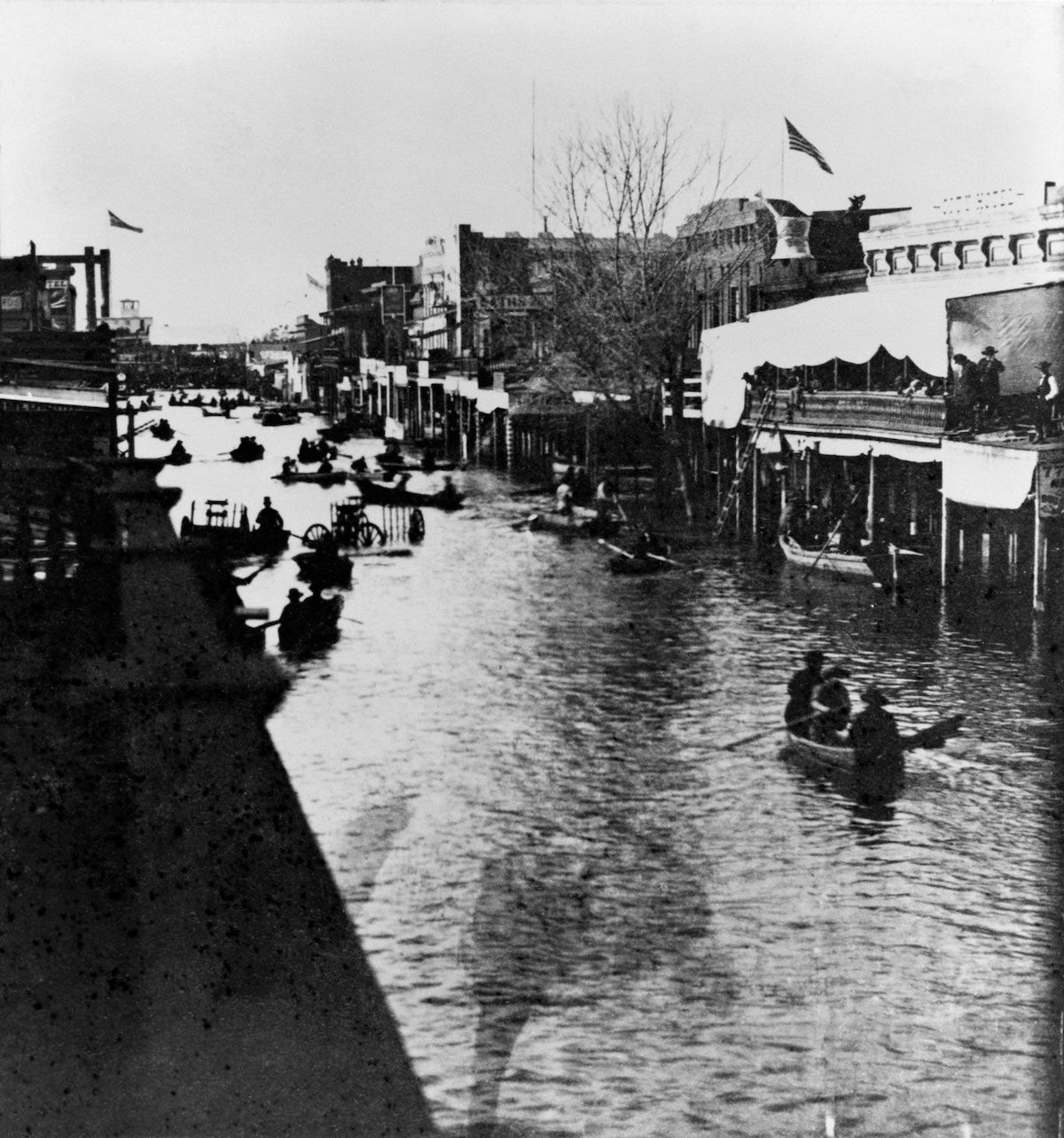
Atmospheric rivers additionally pummel the coasts of western Europe, Africa, South America, and New Zealand. They had been answerable for the horrific floods in Pakistan in August 2022 that killed almost 1,500 individuals and displaced 33 million extra. Their heat moisture is so good at liquefying snow and ice that they’re thawing components of Greenland and the Arctic. And since a hotter ambiance can maintain extra water vapor, local weather change is supercharging these storms. “You’ve got extra gas mainly,” Ralph says.
However on the identical time that rainfall is intensifying, the droughts that happen are deepening. California—which already faces essentially the most variable precipitation in the US—will possible see a future with fewer storms total and longer dry intervals between them. Mixed with the truth that the storms that do come are loaded with extra water, this implies the moist instances will get wetter and the dry instances will get drier. Extra of California’s water goes to pour down in floods.
“Flooding and drought actually are related,” says Michael Dettinger, a hydroclimatologist who’s been finding out atmospheric rivers alongside Ralph for the reason that mid-2000s. “One is simply the flip aspect of the opposite.”
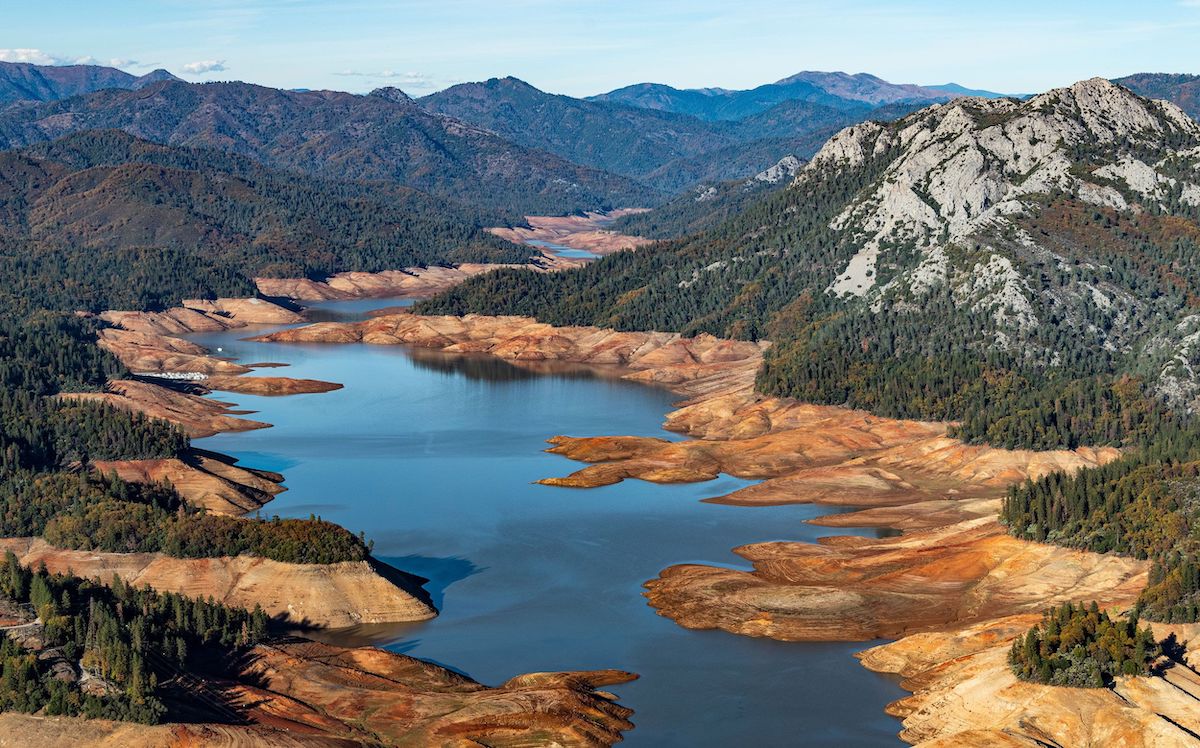
Sacramento in mid-August 2022 is searing. It’s not simply the 40 °C temperature that’s setting information; California is about to shut out its driest three-year interval since 1895. In the summertime, the Sacramento Valley, a part of the bigger Central Valley that grows one-quarter of the US’ meals, is often a checkerboard of gold and inexperienced—the gold of spring wheat combined with glowing inexperienced stalks of sushi rice that sway within the heat breeze. However in 2022, Californian farmers planted lower than half the quantity of rice they projected. That’s as a result of there wasn’t sufficient water. Jacob Katz squints by his sun shades on the huge mud bowl that’s resulted. “Nobody has ever seen this earlier than,” he says, as we drive down a mud lane surveying the barren fields.
The senior scientist at California Trout, Katz has been working for greater than a decade to reconnect the Sacramento River—the state’s largest supply of recent water—to its adjoining floodplains. Just like the leaders of Semá:th First Nation to the north, Katz is aware of that making extra room for water may give the panorama and its inhabitants a buffer in opposition to climate whiplash.
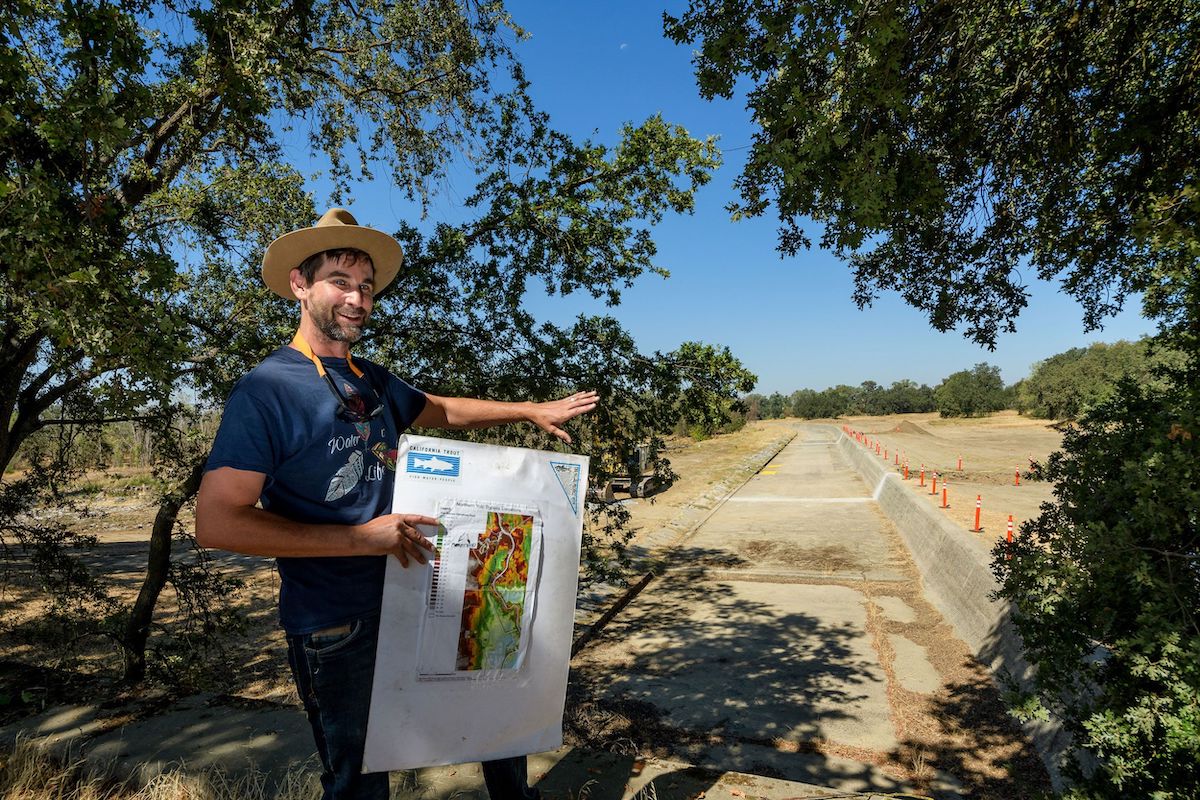
On the finish of the street we’re touring is a working example: lifeless grass provides method to a watery oasis, glimmering like a mirage within the solar. Dozens of white-faced ibises dip and shimmy their wings whereas a sandpiper sips a cool drink. Inside minutes, an egret glides down from the hazy sky and sinks its black legs into the mud. All the life within the valley, it appears, is taking refuge on this shallow 55-hectare lake.
The “lake” is definitely a analysis plot at Davis Ranches, a heritage farm close to the Sacramento River that’s testing new approaches to water administration. One silver lining of the drought is that fallowed farmland can grow to be wildlife habitat, says the farm’s supervisor, John Brennan, who’s checking on the positioning with Sandi Matsumoto, water program director for the Nature Conservancy, a companion on this challenge. “We have to construct all of the habitat we will to prepare for the dry years,” Brennan says. That’s as a result of habitat can take in water when it’s accessible—ideally throughout floods—and retailer it within the soil and underground for people, crops, and animals to faucet into throughout dry spells.
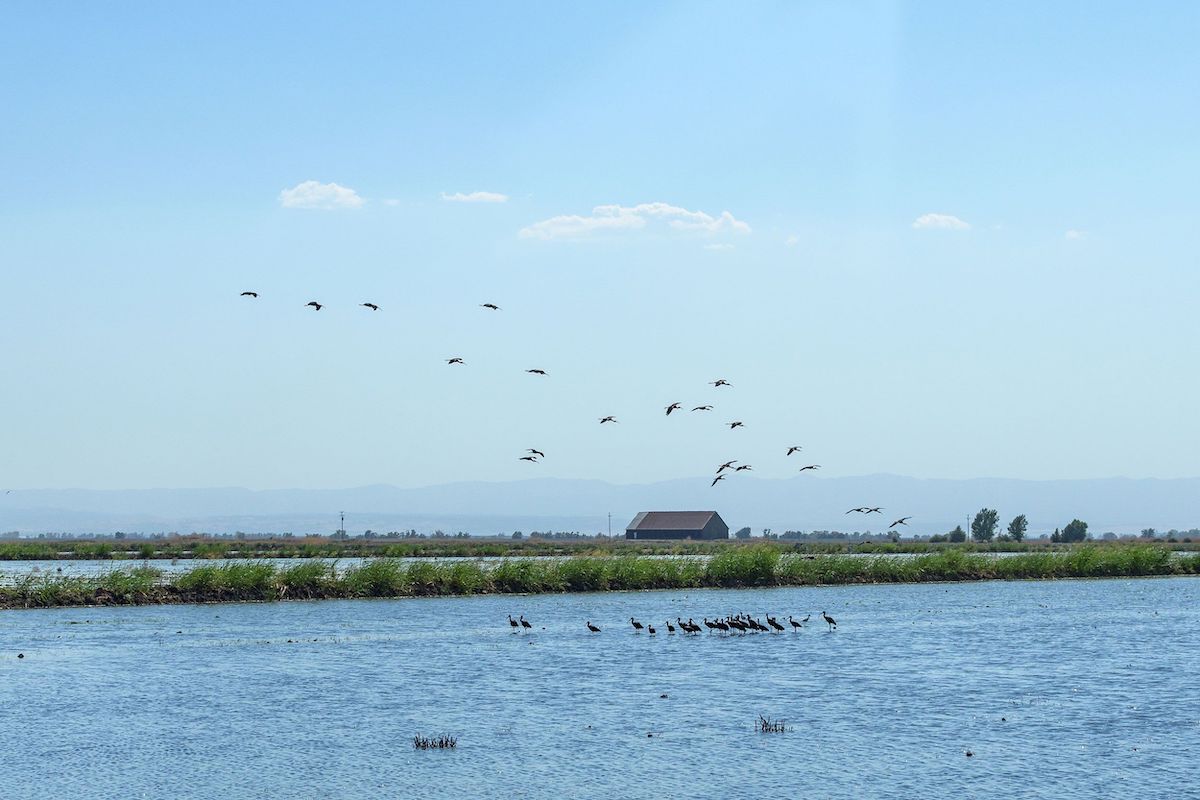
This synthetic wetland was designed to help shorebirds that go to Sacramento throughout their annual migration from the Arctic to South America on a path often called the Pacific Flyway. Shorebirds have declined by about 40 % on the West Coast, and so they’re significantly susceptible to drought. However even seasonal habitat like this could make a giant distinction for birds, Matsumoto says. And it requires far much less water than rice farming.
The challenge is a summer time addition to what Davis Ranches and different farms already do for shorebirds and waterfowl in winter. After the rice harvest wraps within the fall, farmers deliberately flood their fields on the peak of the birds’ winter migration, when river water is extra considerable. If carried out at scale, this might cut back the flooding of some infrastructure and communities whereas permitting extra water to soak into the bottom, which in flip may also help help wildlife and people on the mercy of drought. “So we’ve these two issues: water insecurity and flood,” Katz says. “However they really have a standard resolution—puddles.”
Traditionally, when rain and snowmelt surged down from the Sierra Nevada—California’s craggy spine that, in moist years, is floor zero for atmospheric rivers—the Sacramento would generally swell to 70 instances its common movement and spill throughout a marshy mosaic that related to a wetland ecosystem bigger than the state of Connecticut. Tens of hundreds of thousands of birds and one of many world’s biggest chinook salmon runs relied upon these floodplains. However after the California gold rush, water engineers constricted the river between 1,600 kilometers of steep levees designed to blast floodwater straight to the ocean. Over the approaching many years, settlers changed the wetlands with farms and different developments.
Katz sums up that historical past in a single phrase: drainage. “We’re like anti-beavers,” he says. “In all places we go, we get water off the panorama as shortly as potential. It’s in our language: ‘drain the swamp.’ What does that imply? It means progress.”
In line with a rising physique of analysis, it additionally means extra intense flooding and drought. As a substitute of permitting water to unfold and seep into the earth, squeezing rivers between channels creates a superhighway for flood flows. And sending water away from the panorama means, for essentially the most half, the valley stays parched; below-ground aquifers wait desperately for drips. Add in the truth that agriculture pumps groundwater considerably sooner than these aquifers can recharge, and also you’ve received a really thirsty state. However mimicking the pure flows of water throughout the terrain may assist deal with each issues on the identical time.
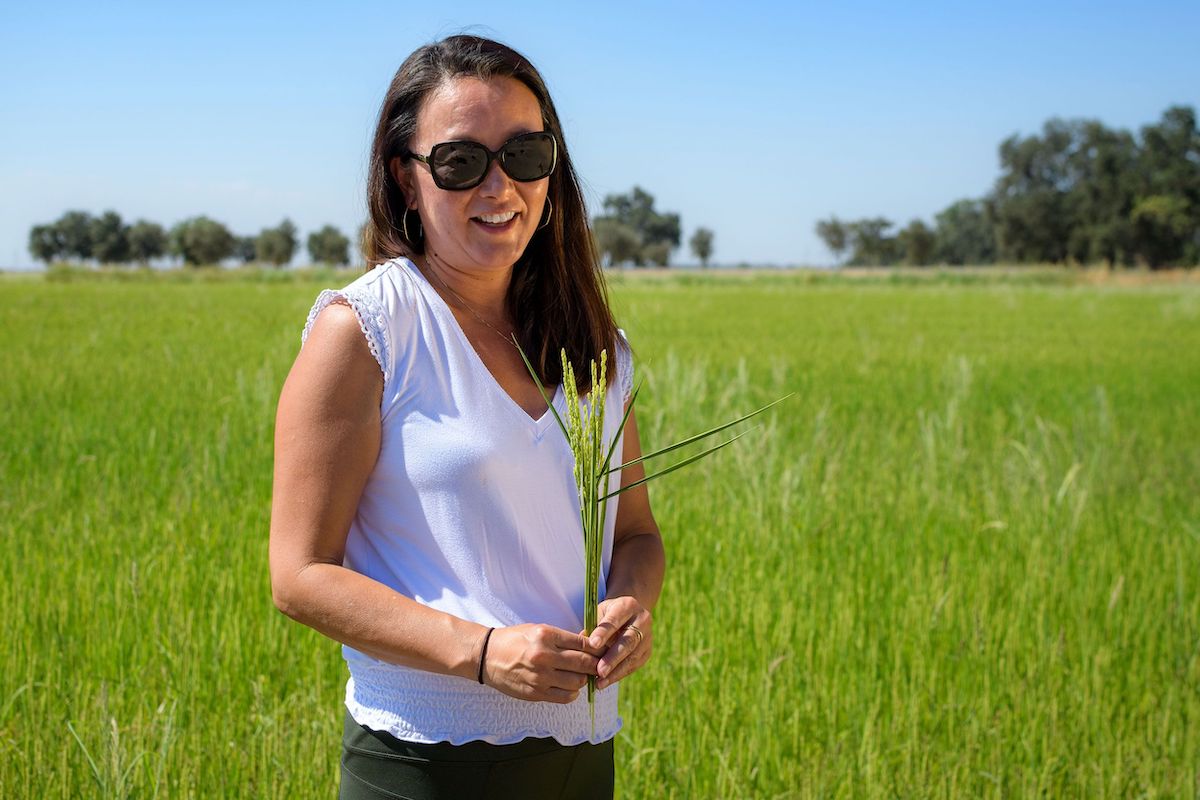
“We have to return to the pure cycles of our system, which embrace atmospheric rivers, which embrace drought,” Matsumoto says. “We have to restore our pure methods which might be capable of take care of these extremes.”
She seems to be throughout the pop-up wetland the place dragonflies circle over neon-green algae. “Fish meals!” Katz declares. When daylight hits the shallow, nutrient-rich water, it blooms with phytoplankton and invertebrates, which then feed fish and birds. Efforts by teams just like the Nature Conservancy and California Trout to flood the valley in winter have been supporting dozens of species of birds, which, earlier than dropping off over the previous half-century, had been so quite a few they’d black out the solar.
Native fish, like endangered winter-run chinook salmon, additionally profit after they have entry to meals and shelter on the floodplain. Analysis reveals that juvenile chinook launched into wetlands can develop 5 instances sooner than these confined to a channel between levees. They’re extra more likely to survive their odyssey to the ocean and again as properly. “It’s night time and day,” Katz says. Straitjacketed rivers with managed flows favor fish like bass which might be invasive in California. However pure swings and flood occasions help the native salmon they’ve formed, similar to they’ve formed this fertile valley. “Flood doesn’t must be catastrophic,” Katz says. “It may also be a driver of the productiveness and abundance we so worth.”
Releasing rivers has been catching on as a flood mitigation technique round North America and the world. And the locations welcoming water are seeing added advantages.
Within the Netherlands, a program referred to as Room for the River has eliminated dikes and created aspect channels for water and fish to meander by 34 riverside communities. Many of those locations now provide higher biodiversity and recreation along with enhanced flood security. The brand new shops for water act like pressure-release valves when flows are excessive. Throughout a freak summer time flood on the Meuse river in 2021, water ranges had been the best ever recorded in some locations. However downstream, thanks partly to those Room for the River tasks, there was a lot much less flood injury than in earlier years, even with greater flows.
An identical program in Washington State has restored 114 kilometers of fish habitat and created greater than 3,700 jobs, starting from outreach employees to engineers. Within the state’s southwest nook, alongside the Columbia River, locals are additionally flattening levees to present lamprey and salmon year-round entry to 370 riparian hectares whereas additionally defending infrastructure from flooding.
Whereas California’s plumbing is extra advanced—it’s probably the most engineered water methods on the planet—the state can also be restoring some riverways. On the Sacramento, for instance, employees are digging 15,000 dump vans’ value of earth from a levee in order that salmon and sturgeon have a greater likelihood of reaching the floodplain. And now, due to rising consciousness of atmospheric rivers and precipitation swings, water managers are beginning to perform floodplain tasks particularly to spice up groundwater: a near-miraculous co-benefit.
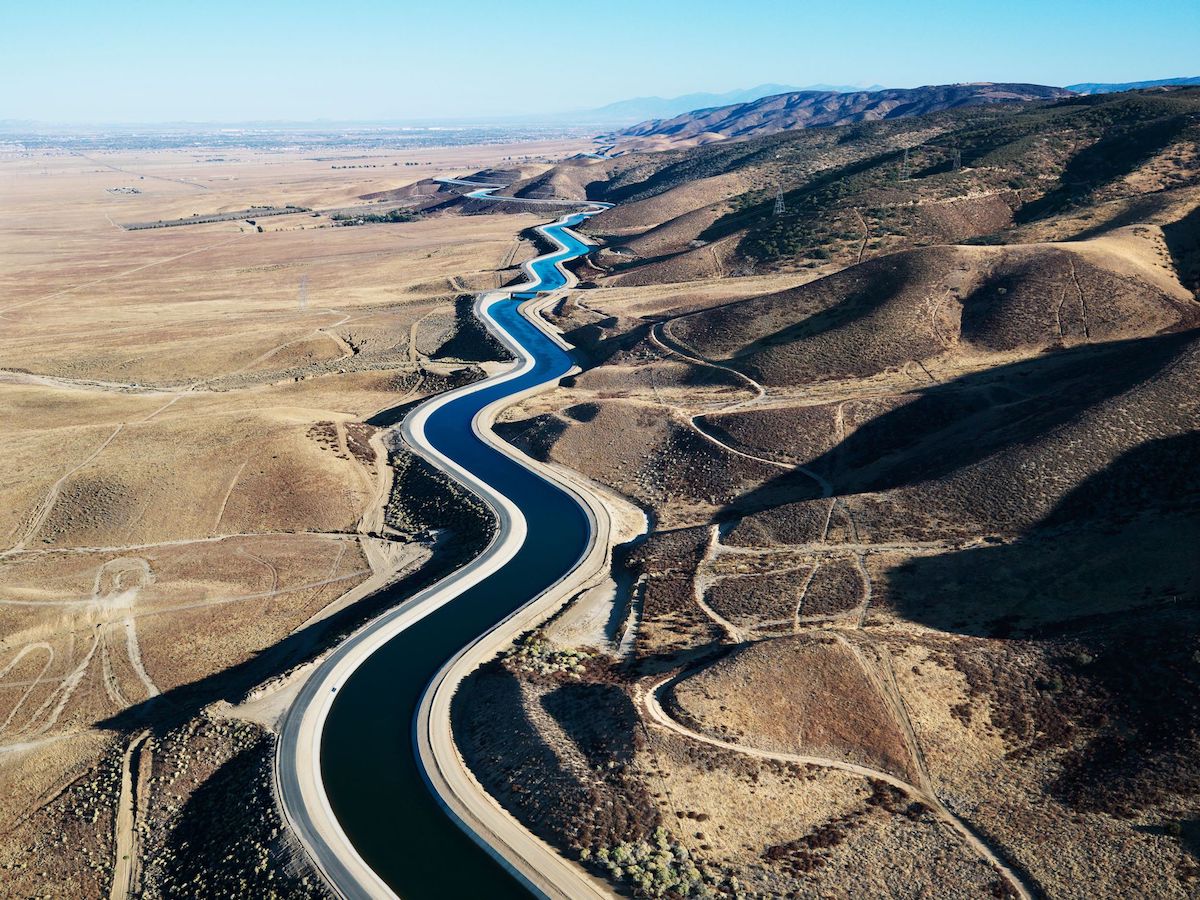
The final discipline we go to at Davis Ranches crunches with dry grass and weeds, one other casualty of the drought. However the earlier December, an atmospheric river unloaded a great quantity of rain. This 24-hectare tract was ready for the deluge. The ranch piped floodwater from the river into this plot, and its porous soils sucked it up like a sponge. Over a couple of weeks, the sponge trickled its contents by sand, silt, and gravel into layered swimming pools within the earth: groundwater aquifers. On the identical time that puddles had been feeding stilts and sandpipers above floor, the water desk beneath was rising.
This means of sending floor water underground just isn’t a brand new concept, however the drought has given it new urgency together with a brand new identify: managed aquifer recharge, often known as MAR, Ag-MAR, or Flood-MAR. With most river water already rationed amongst human makes use of, in addition to minimal flows for fish, extra water from atmospheric rivers may be the shock absorber between flooding and drought if allowed to pool on the land as a substitute of charging out to sea. “The one water not spoken for is these flood flows,” Brennan says. “Even within the driest years, we’ve additional water.”
Since beginning the recharge challenge in 2019, Davis Ranches has captured about 370,000 cubic meters of water every winter. That’s round what 150 US households use in a yr, and it’s simply from one discipline, overlaying just one % of this property. The farm is saving up that groundwater to share with neighbors at a later date, with the aim of leaving extra water on the floor for wildlife.
In essentially the most drought-prone reaches of the state, communities are equally turning to groundwater recharge, usually placing pipes and canals arrange for summer time irrigation to new use throughout winter to divert flood flows into aquifers. By 2022, native governments in areas the place human use has depleted aquifers had been required to submit sustainability plans in accordance with a 2014 state legislation geared toward restoring groundwater. Many of those plans embrace recharge tasks just like the one at Davis Ranches however bigger.
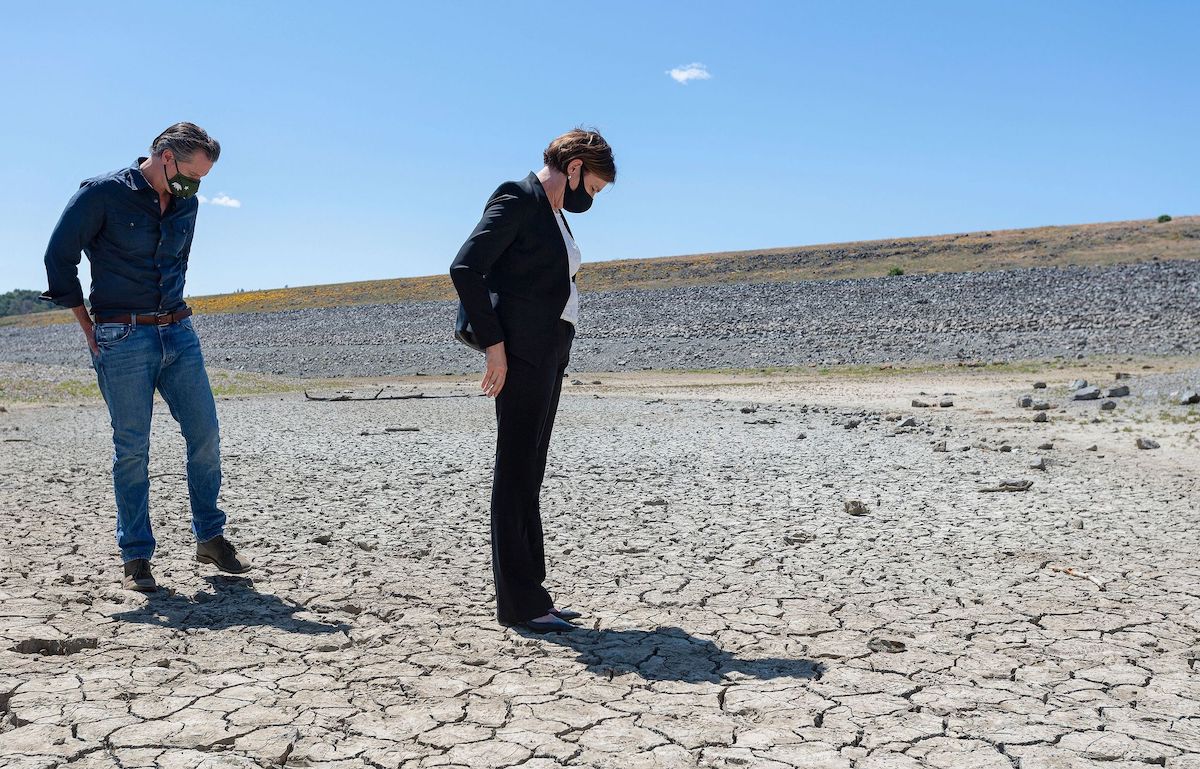
The California Division of Water Sources (DWR) has already invested US $68 million into 42 of those tasks, transferring one-quarter of the way in which towards governor Gavin Newsom’s aim of increasing recharge capability within the state by greater than 616 million cubic meters. That’s the equal of including one other massive reservoir however underground, protected from warmth and evaporation. By some estimates, the sapped aquifers beneath the Central Valley have area for 3 times extra water than all of California’s reservoirs mixed. DWR is now vetting dozens of further tasks geared toward banking water beneath floor.
The summer time I go to the Sacramento Valley is the primary summer time after the devastating storm in Abbotsford. Regardless of the town rebuilding a destroyed part of dike, water from the Sumas River nonetheless seeps by the reinforcements right into a cattle farm. The flooded space has shrunk to the dimensions of some soccer fields, however its water nonetheless teems with geese and geese. To the Semá:th individuals, it nonetheless carries the spirit of Sumas Lake.
Traditionally, Sumas Lake would have been this small solely throughout a serious drought. However even with out the pure lake as an indicator, indicators of dry instances are cracking by the panorama. In 2022, the city of Chilliwack, simply up the Fraser River from Abbotsford, has recorded the most popular August and September in additional than 140 years. And whereas Abbotsford—which depends on some groundwater for consuming—has a number of steady aquifers, the area can also be house to the one two aquifers identified to be declining close to the southern coast of British Columbia. (Aquifers are additionally essential for replenishing native streams and rivers from beneath floor throughout summer time.) And whereas drought could also be extra refined right here than it’s in California, scientists challenge that components of the province are due for warmer and longer dry spells between downpours, too.
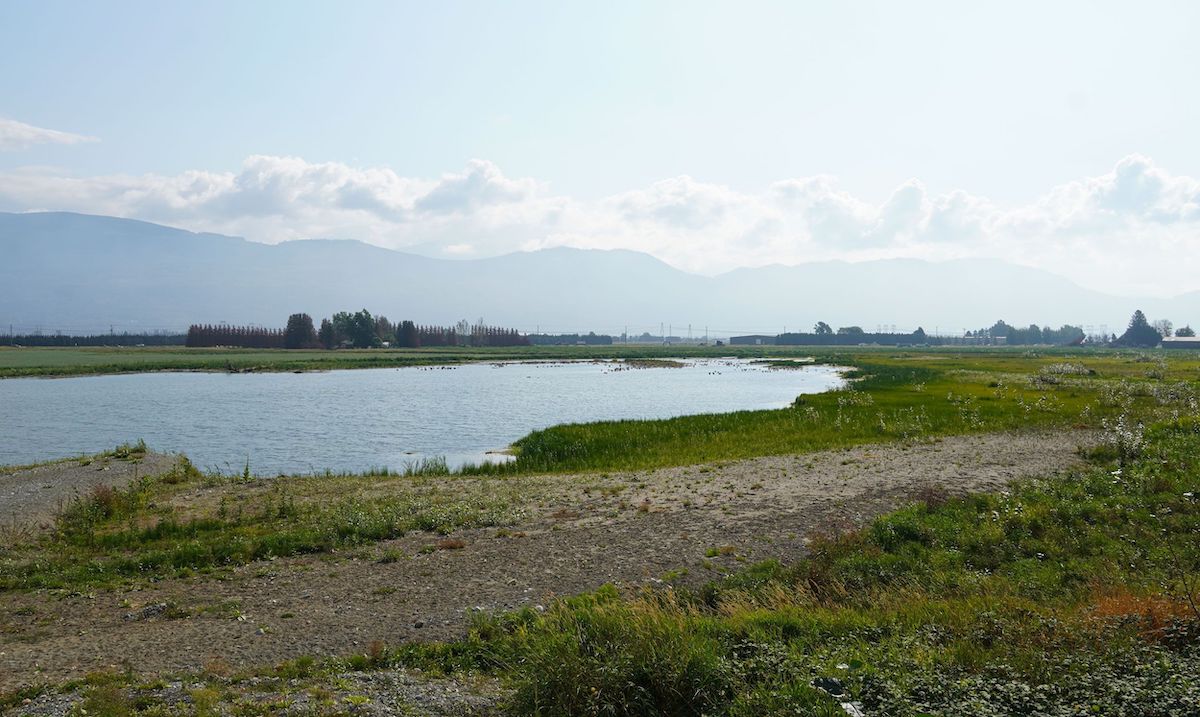
The truth that his house feels distinctly “droughty” so quickly after the most expensive flood in BC historical past issues Murray Ned. “For me and my technology, we might not must endure it an excessive amount of,” he says. “However for my grandchildren, my children … Yeah, it’s very alarming.”
As govt director of the Decrease Fraser Fisheries Alliance and an adviser to Semá:th First Nation, the place he served as a councilor for 25 years, Ned is very involved about culturally essential sturgeon and salmon. They’ve been lower off from round 85 % of their floodplain habitat, which traditionally included Sumas Lake. Coho, chum, and chinook salmon nonetheless migrate to the world to spawn, together with sturgeon, however all these species are in decline. Warming water and drought are including new pressures. In line with scientists and Semá:th leaders, reviving Sumas Lake may assist.
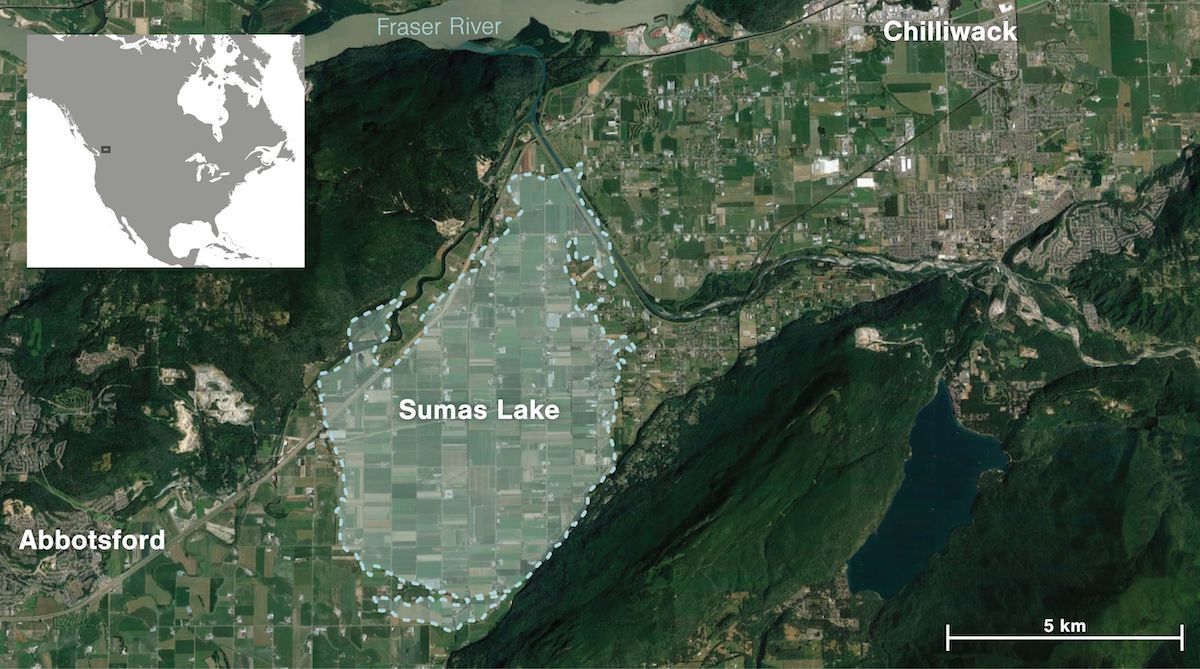
The Metropolis of Abbotsford has a special imaginative and prescient, geared toward defending property and agriculture, and maintaining the water at bay. A number of months earlier than the heatwaves, the town launched a flood mitigation plan targeted on new dikes and pump stations in addition to on elevating a bit of freeway. Like so many planning processes in Canada and world wide, this one didn’t initially have Indigenous leaders on the desk. Semá:th chief Lemxyaltexw Dalton Silver sees that as a missed alternative. Stó:lō leaders, in spite of everything, have entry to deep generational information of native watersheds, which as soon as outlined their clans and dialects.
“The information that our individuals had has by no means been revered. The information that a few of our individuals nonetheless carry just isn’t revered,” Silver says. “I would like to see us included within the planning.”
The center of the matter is reconciliation for previous injustices. The Canadian authorities by no means consulted or compensated the Semá:th individuals for the unique destruction of the lake that was their cultural and financial lifeblood. Ned’s great-grandfather, Chief Selesmlton, was the chief of Semá:th First Nation within the early Twenties when the federal government was planning the lake’s removing. Selesmlton—whose conventional identify, Kwilosintun, was handed right down to Ned—instructed a royal fee that draining the lake would starve and impoverish his individuals. In 1923, the colonists did it anyway. When the water lastly subsided the next yr, sturgeon had been discovered combating for his or her lives, poking their pointy heads from the mud. The Stó:lō name this defiant-looking act kw’ekw’e’liqw—“sticking up.”
Regardless of Semá:th First Nation pursuing claims and compensation for Sumas Lake and the provincial and federal governments each committing to reconciliation with First Nations, flood administration stays the accountability of municipalities. The Metropolis of Abbotsford got here up with plans and shared them with Semá:th leaders later.
In line with metropolis officers, they integrated a few of the nation’s suggestions into their proposal, which incorporates setting again the Sumas River dike to create an overflow channel for water to feed into the lake backside throughout massive floods. Selections to revive Sumas Lake extra completely would must be hashed out with senior ranges of presidency in addition to with neighboring First Nations and communities throughout ongoing negotiations, says Melissa Godbout, a communications officer with the town. Then, really restoring the lake would require some degree of managed retreat: the strategic motion of individuals and infrastructure out of hurt’s method by shopping for out flood-impacted properties.
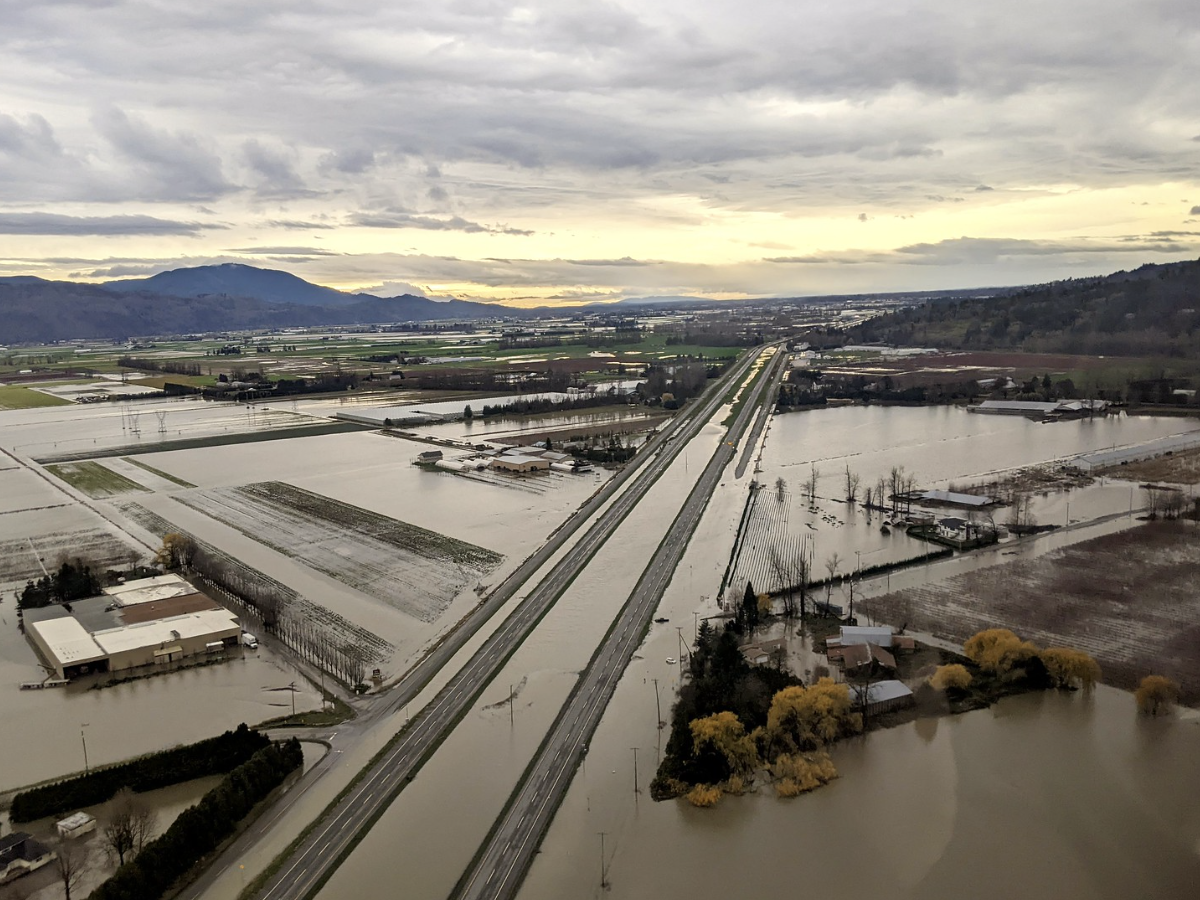
Ned and Silver will not be naive to the challenges of managed retreat. Silver stresses the necessity to acquire buy-in from the broader neighborhood and never inflict displacement on others just like the colonial authorities inflicted on his individuals when the lake was drained. “I additionally weigh the human issue,” Silver says. But, given the lake’s significance to Stó:lō tradition and biodiversity in addition to flood safety and water safety, the choice must be on the desk, Silver says. “We’ve received to comprehend our connection to the whole lot round us.”
A number of months earlier than the flood, Ned had a dream that felt like actuality. He stood ankle-deep in water along with his spouse, close to a beachy financial institution of the Fraser River. It was a sunny day, and two males fished close by. However quickly, his spouse, the fishermen, and the seashore all disappeared. Ned discovered himself waist-deep in rising water. Downriver, a six-meter-long sturgeon—the huge measurement his great-grandfather would have identified—swam straight for him, its spiked tail slicing by the river.
Stó:lō oral historical past says that the sturgeon was as soon as a lady who spent all her time within the water. The lady’s father, a neighborhood chief, gathered his individuals and determined his daughter ought to stay within the water without end. He reworked her right into a sturgeon who wouldn’t die after spawning. She would survive and maintain dwelling to assist the individuals of the longer term.
The sturgeon within the dream didn’t slam into Ned; it simply slithered softly by. Ned ran his hand throughout its prehistoric physique. The subsequent factor he knew, Ned was many meters from shore, surrounded by deep water. What he thought was a river was really Semá:th Xó:tsa—the lake of his ancestors.
As calendars change to 2023, the pendulum swings in California but once more, this time from extreme drought to flood. Between late December and mid-January, 9 back-to-back atmospheric rivers dump 121 billion cubic meters of water throughout the state. That’s sufficient to fill 48 million Olympic swimming swimming pools or flood 120 Sumas Lakes.
The storms are a depraved brew of torrential rain and roaring winds that swallow streets, uproot redwoods, knock out energy for greater than two million households, unleash 700 landslides, and kill no less than 20 individuals. Cities like San Francisco obtain virtually their annual rainfall in simply three weeks. Most of it pours down pavement into the Pacific.
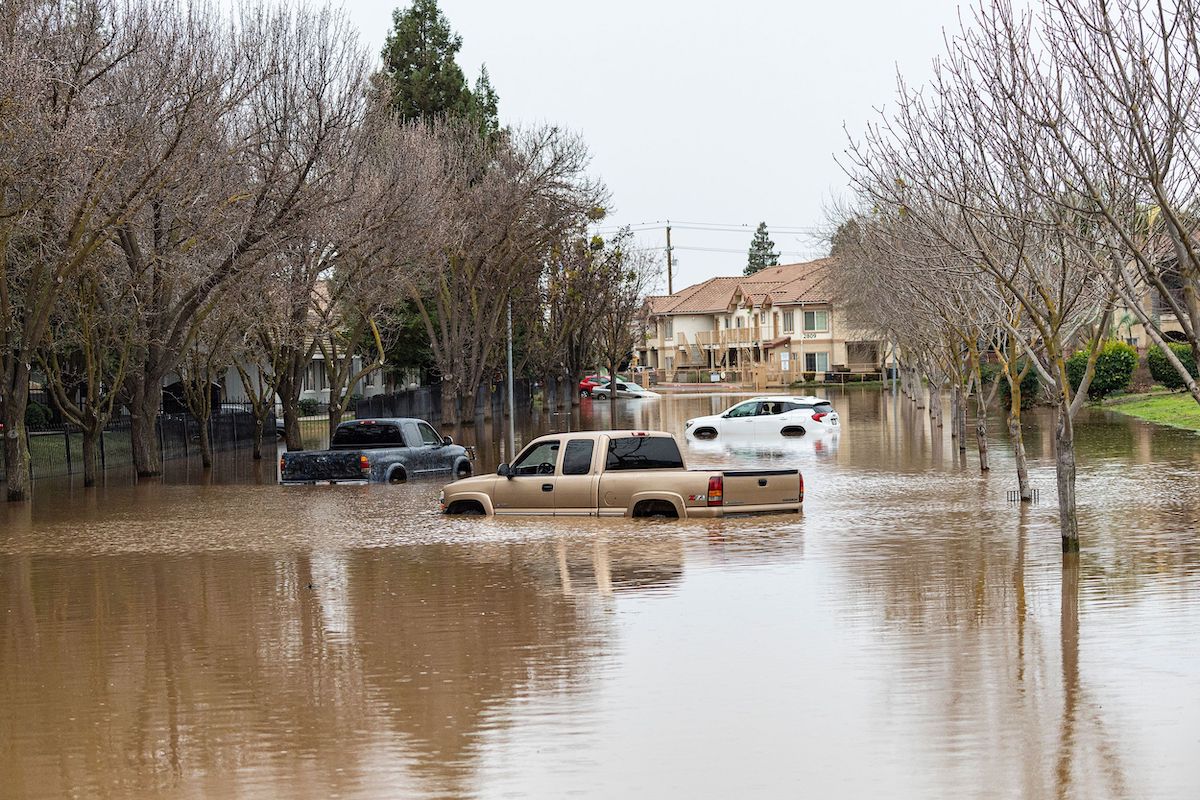
These atmospheric rivers additionally penetrate lots of of kilometers inland. In Tulare County—one in every of California’s most drought-plagued areas, the place farmers have pumped aquifers so hole that even some levees are sinking—the rains at first really feel like a present.
“Water is a brand new emotion in our space,” Aaron Fukuda, basic supervisor of the Tulare Irrigation District, tells me later. Folks and nature are completely satisfied. The birds come again. The frogs are croaking. “It’s actually miraculous what water does convey. When it’s not there, you’re struggling.”
After the primary few storms, when the San Joaquin River begins surging, Fukuda and his colleagues open the floodgates to 11 completely different recharge basins, welcoming water to pool throughout greater than 730 soccer fields’ value of land. Native farmers name to ask if they’ll ship water onto their properties, too. “On the primary day, I feel we had 70 or 80 orders,” Fukuda recollects. By way of this collective effort, the county secures sufficient groundwater in January alone to run about 18,000 houses for a yr.
However by spring, the emotion has modified; the neighborhood is experiencing climate whiplash. So many storms have bashed the state that Governor Newsom passes an govt order permitting individuals to quickly divert floodwater onto nearly any land that can take it. Because the drama unfolds, Tulare County additionally witnesses a shock transformation: an historic lakebed—which traditionally held the most important physique of recent water west of the Mississippi—is quickly refilling. The lake as soon as supported the Yokut and different Indigenous tribes, and lengthy earlier than them, wooly mammoths and different now-extinct megafauna. On the finish of Might, it ripples throughout 470 sq. kilometers—almost the dimensions of Lake Tahoe to the north.
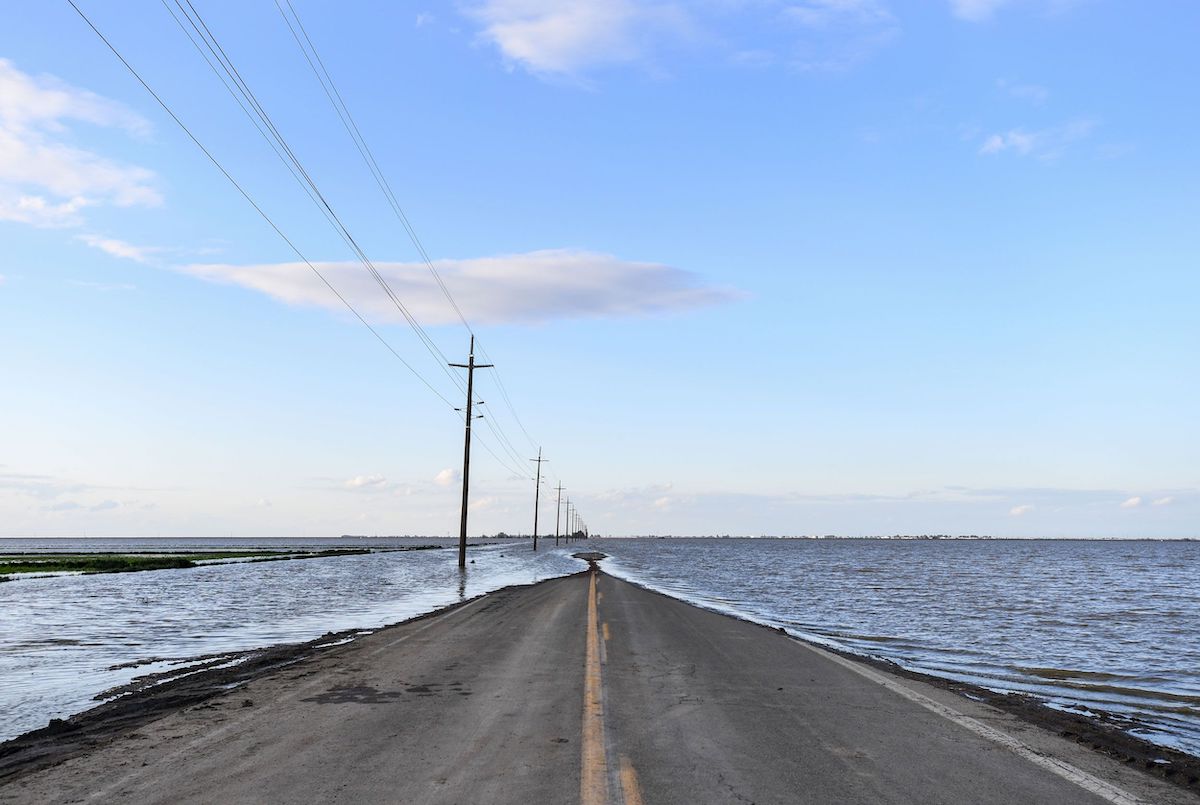
Many worry that Tulare Lake will swell extra with the “massive soften.” All these atmospheric rivers have stacked sufficient snowpack on the Sierra Nevada to fill the lakebed 4 instances over. “It’s like your bathtub’s full, your rugs are saturated, and any individual turns the nozzle again on,” Fukuda says.
On this case, the bath accommodates staple crops like tomatoes, cotton, and safflower in addition to industrial infrastructure from chemical crops to rail strains. Farmers get to work constructing berms in a last-ditch effort to avoid wasting crops and cows, lots of which have already been misplaced.
How rather more they and others lose is determined by what communities do subsequent. When water rises and reclaims a few of its land, will individuals maintain combating with grime, dikes, and pumps? Or will extra of us pull again and make room for water to remodel?
Related questions are rising alongside the previous shores of Sumas Lake. “There’s going to be a lake returned in some unspecified time in the future, irrespective of how massive you construct the infrastructure,” says Ned. “That’s Mom Nature, that’s local weather change. It’s fairly onerous to manage.”
Just like the Tulare Lake basin, the dry mattress of Sumas Lake is the product of greater than a century of colonization. The realm has been divvied up into 1,375 properties—lots of them potato and dairy farms. It’s additionally bisected by energy strains, a nationwide freeway, and the controversial Trans Mountain oil pipeline.
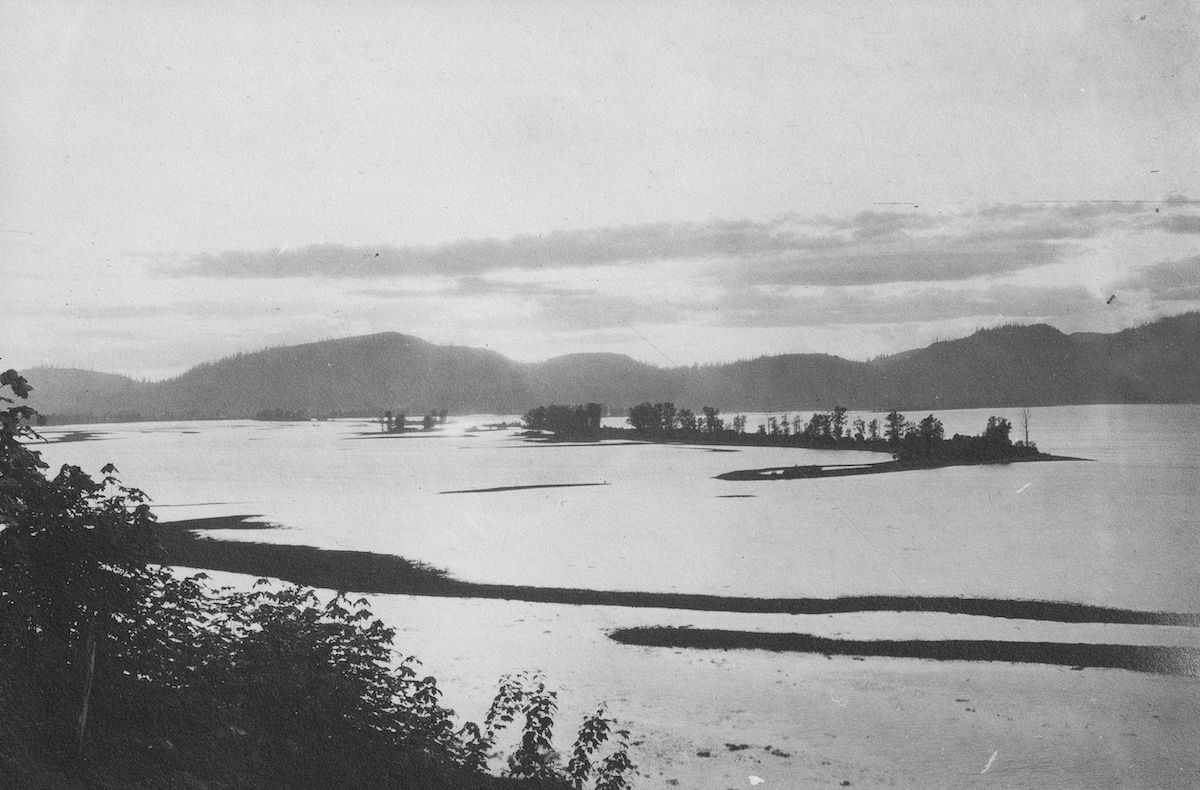
But, restoring the lake should be cheaper than the established order. In a forthcoming examine that Semá:th First Nation labored on in partnership with the College of British Columbia, shopping for out all of the lakebed properties at present land values would price round CAN $2-billion, in contrast with Abbotsford’s $3-billion-plus plan to strengthen flood boundaries. These financial savings line up with different Canadian examples of managed retreat. In Grand Forks, British Columbia—which was devastated by flooding in 2018—the neighborhood agreed to take away or relocate 70 buildings after studying that long-term flooding may triple the price of retreat.
Whatcom County, Washington, is engaged on the same program for essentially the most threatening bends of the Nooksack River—that wild and shifting waterway that defied the US border in November 2021 when it reverted again to its historic northward course and barreled, downhill, into Sumas Lake. There, the county is within the means of buying almost US $23-million in state and federal grants to purchase out 23 properties and elevate 29 constructions, a number of within the city of Everson, the place the Nooksack roared by Predominant Avenue.
The Whatcom County plan is an instance of partial retreat that prioritizes essentially the most at-risk houses and companies within the floodplain. “We’re not looking to buy out the entire impacted space,” says Paula Harris, the county’s river and flood supervisor. “That’s entire cities. They’re all we’ve received.” Nonetheless, it’s an acknowledgment of the facility of water, which can rise once more and movement downhill. “We’re combating gravity.”
Fourteen months after the Abbotsford flood, employees suck up the final remnants of Sumas Lake, virtually precisely 100 years after settlers started efforts to tame it. As eagles and herons look on, representatives from the Metropolis of Abbotsford, Semá:th First Nation, and the Decrease Fraser Fisheries Alliance drag a 60-meter seine throughout the water. They seek for any fish which will have gotten trapped on the incorrect aspect of a barrier people constructed.
4 individuals on foot plus two in a small boat battle by the chilly water to shut the web. After they lastly pull it to the floor, one wild coho salmon stands out in blazing spawning colours, months after it ought to have launched its sperm and died. And amid a sea of invasive carp, three massive sturgeon wriggle their iridescent our bodies. They twitch. They struggle. They stick their heads up, defiantly, from the receding water.
This text first appeared in Hakai Journal and is republished right here with permission. Learn extra tales like this at hakaimagazine.com.
[ad_2]

